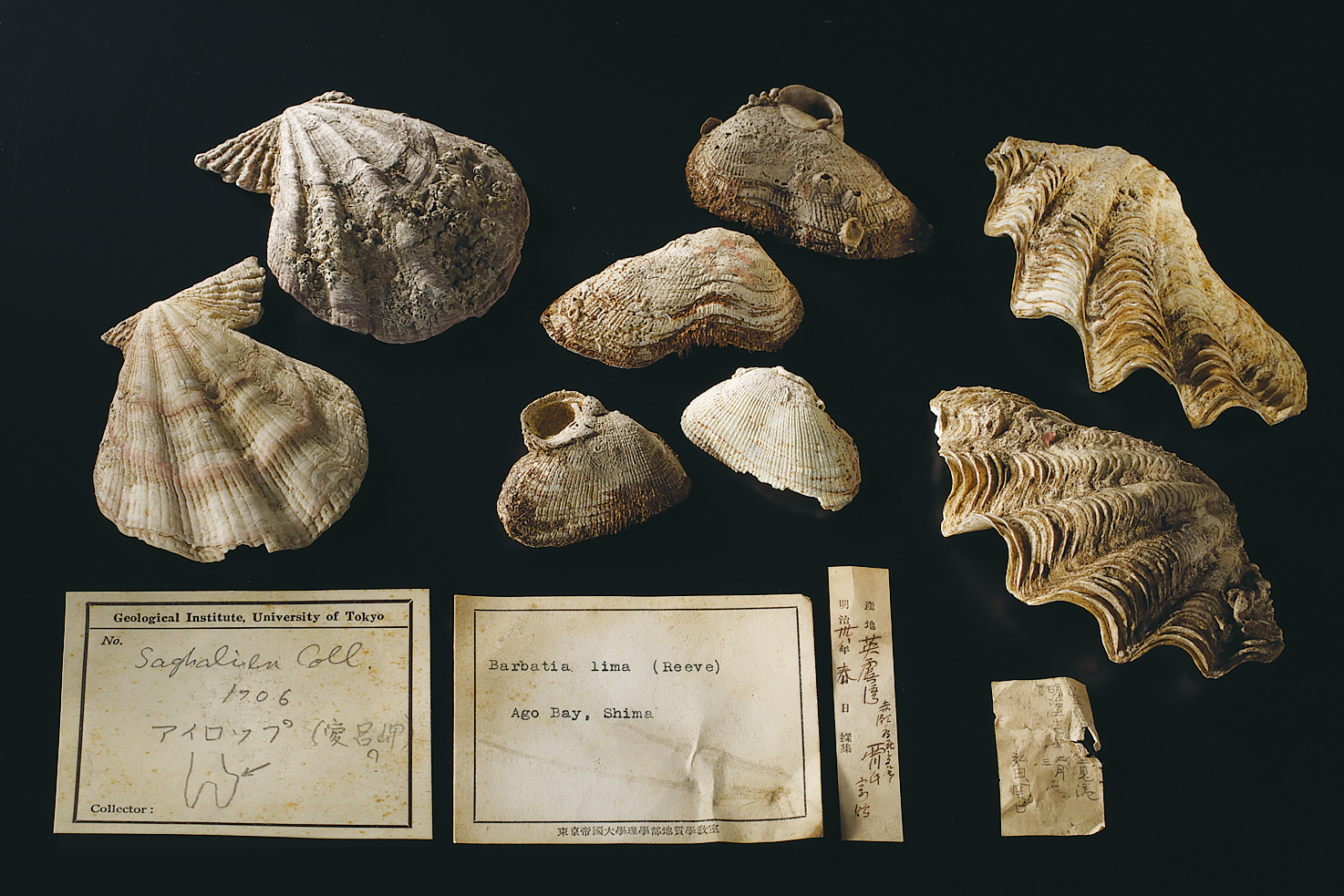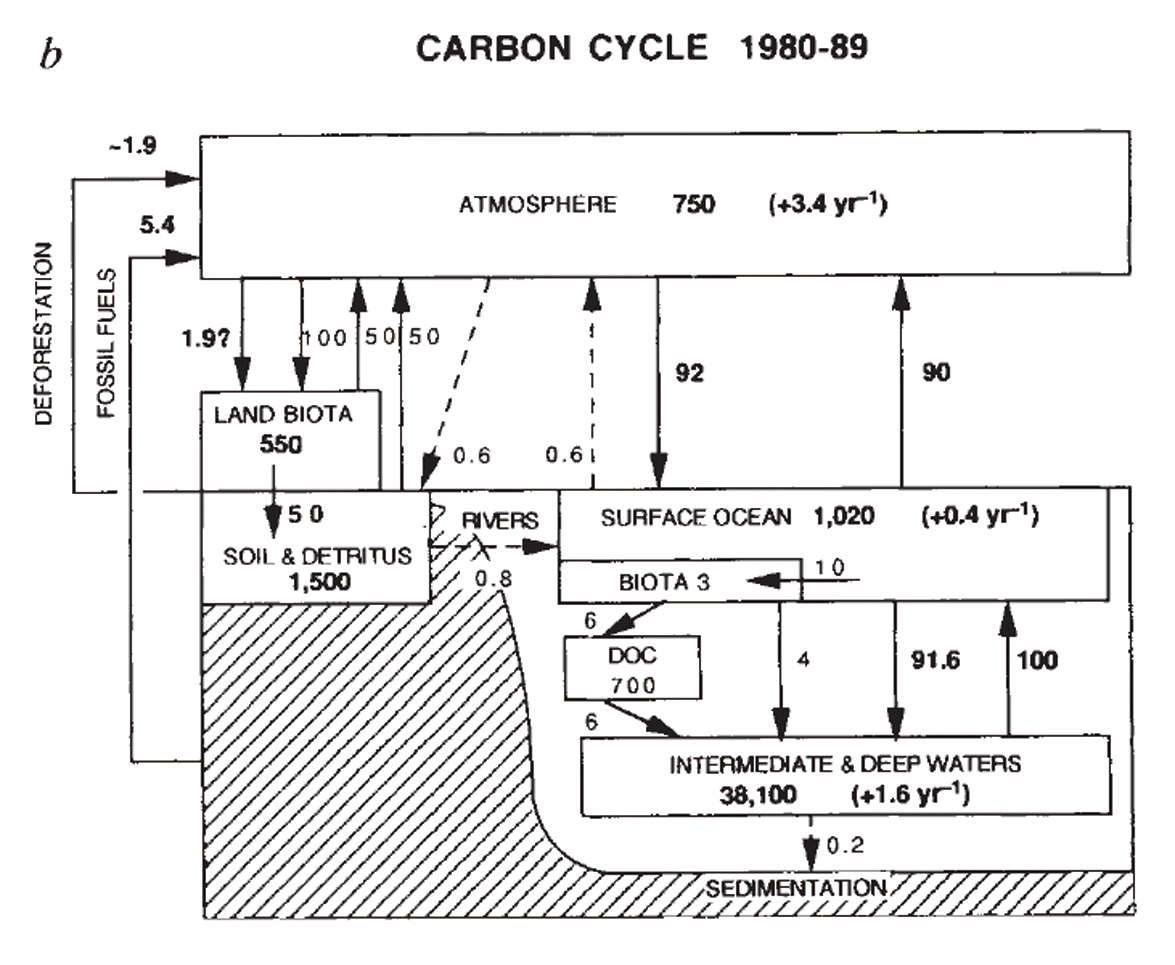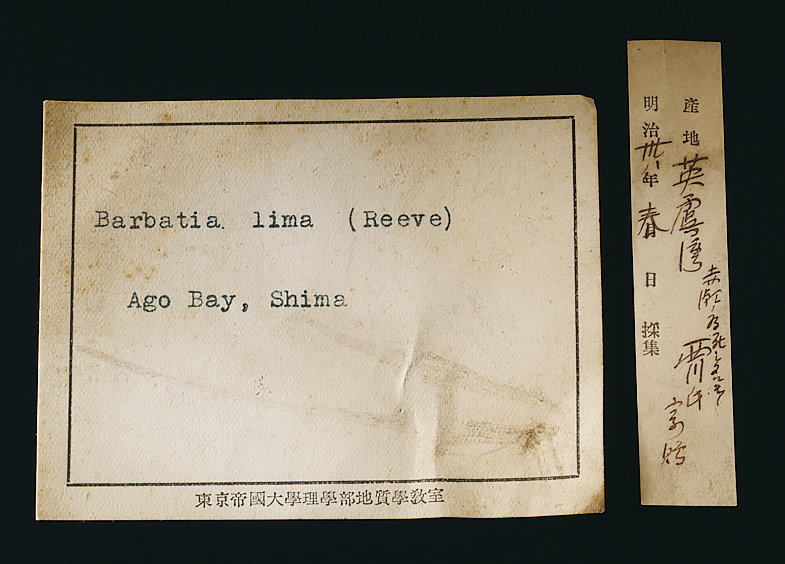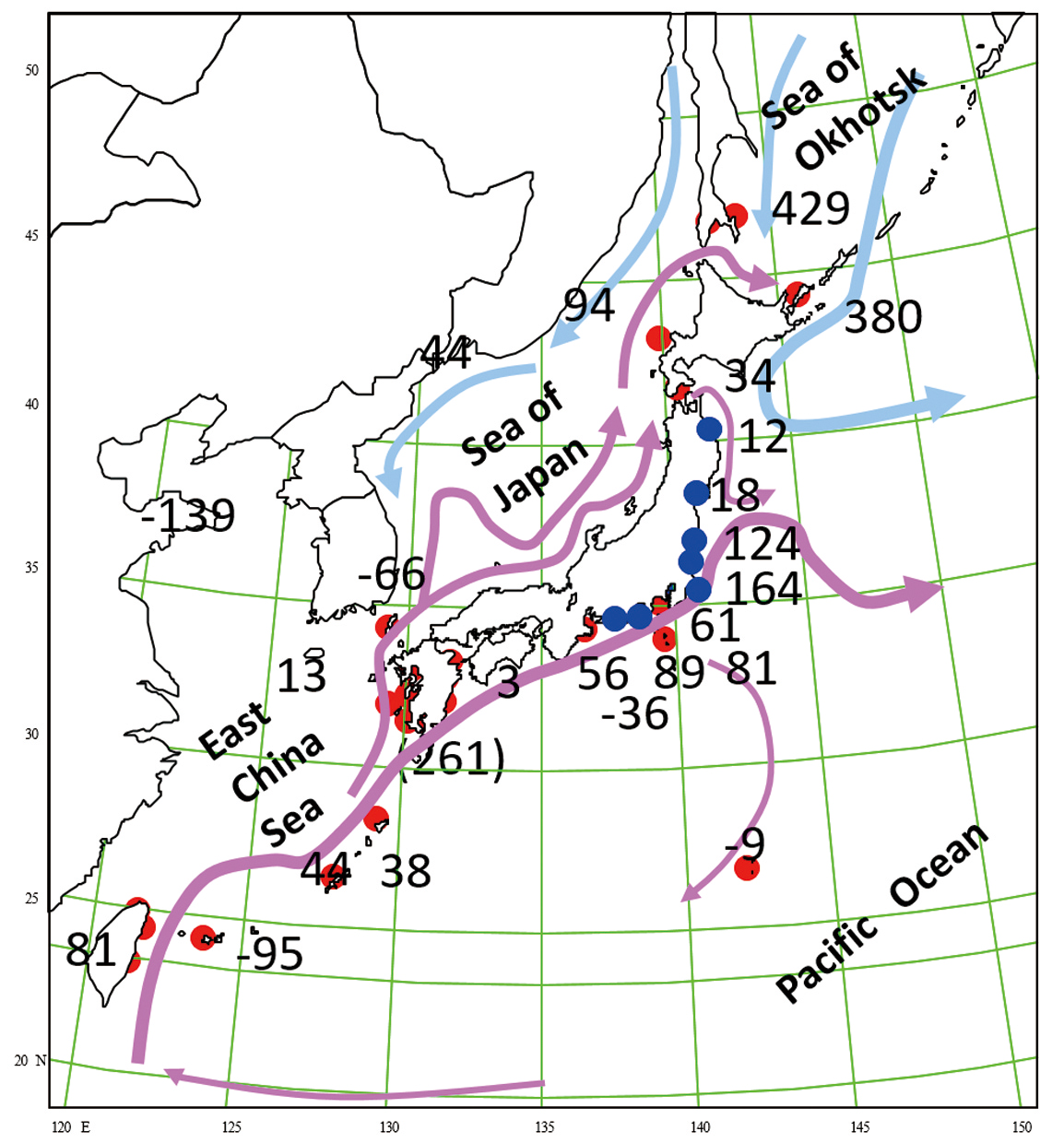H3
Shell collected around 1900 by biologists are dated to 500 years old
Variability suggest the wide range of science which were related to radiocarbon dating applying in the Chronosphere exhibition hall. We measure a series of shell collected by biologists for researches around the Japanese archipelago. We found that shells from Sakhalin collected in 1906, one from Tokyo Bay 1882, one from Ago Bay and one from Ogasawara 1894 were dated to 869, 536, 487, 504 years BP (uncalibrated). This discrepancy of carbon is originated from the long slow global journey of seawater.
In the atmosphere, we have 14C at the natural abundance ratio around 10-12. This concentration is assumed to be equivalent between decay and production by cosmic ray in the upper atmosphere. On the other hand, the radiocarbon contents in sea water are depleted in 14C, because it cannot be equivalent with atmosphere through small flux. Deep water contains 51-times large amount of carbon than atmosphere but radiocarbon in sea water becomes apparently old during the global circulating conveyor.
The effect of 14C depleted deep water on the 14C age gap in surface water, which is called reservoir effect and the average age of water is 400 years older than the contemporaneous atmosphere. The regional intensity of this effect had been unknown around Japan. That is the reason why we measure old biological collection with the registration of sampling place and date. A very strong reservoir effect was found in shell from Sakhalin as large as 900 years. The impact of deep water is variable in relation to the impact of deep water upwelling. The shell from Okhotsk affect from old water strongly, because this region is one of the goal of global circulation of deep water. (Minoru Yoneda & Kunio Yoshida)
References
Yoneda, M. et al. (2007) Radiocarbon marine reservoir ages in the western Pacific estimated by pre-bomb molluscan shells. Nuclear Instruments and Methods in Physics Research B 259: 432-437.
Yoshida, K. et al. (2010) Pre-bomb marine reservoir ages in the Western Pacific. Radiocarbon 52: 1197-1206.
Siegenthaler, U. & Sarmiento, J. L. (1993) Atmospheric carbon dioxide and the ocean. Nature 365: 119-125.




